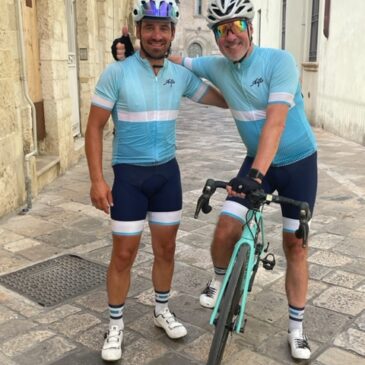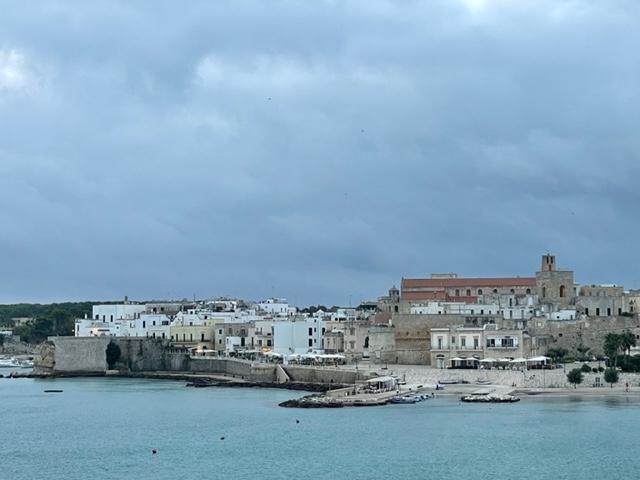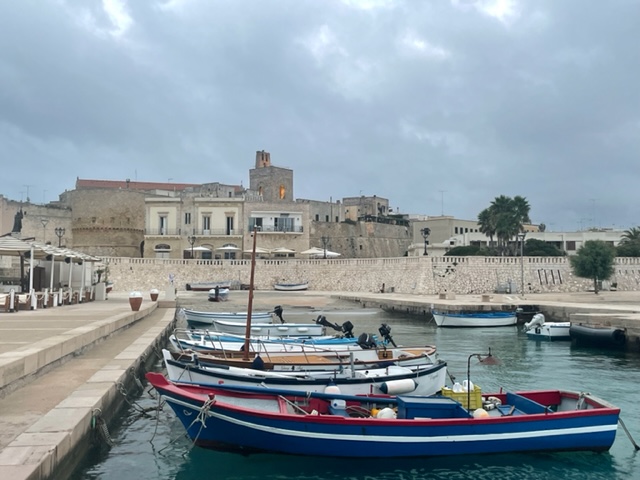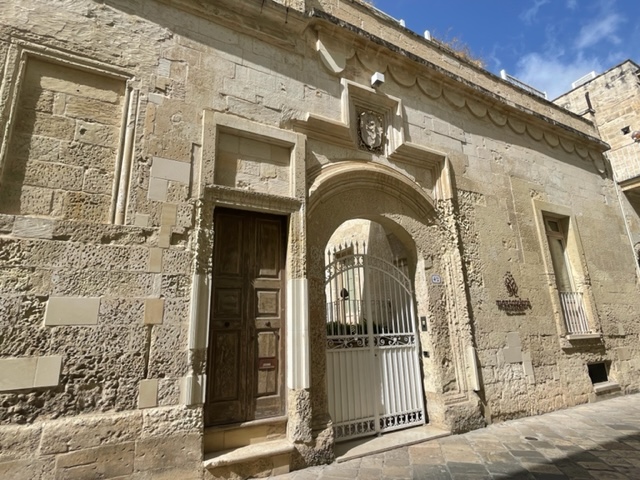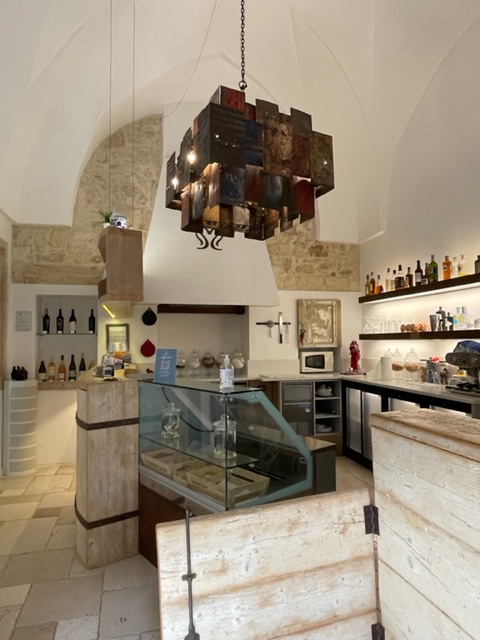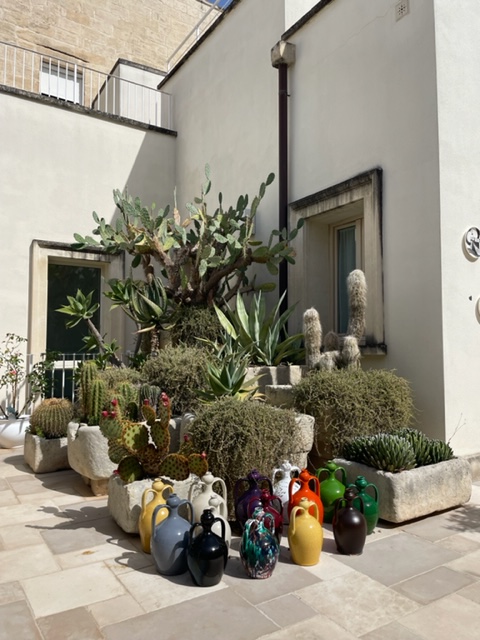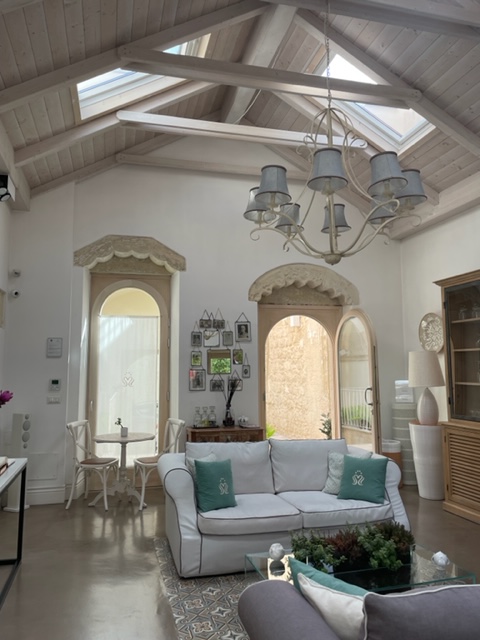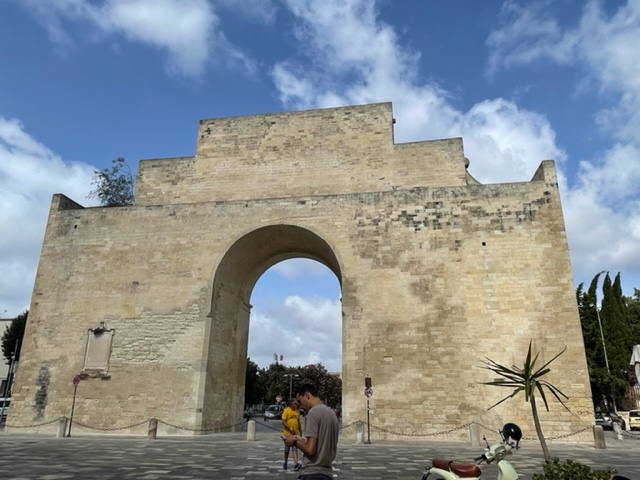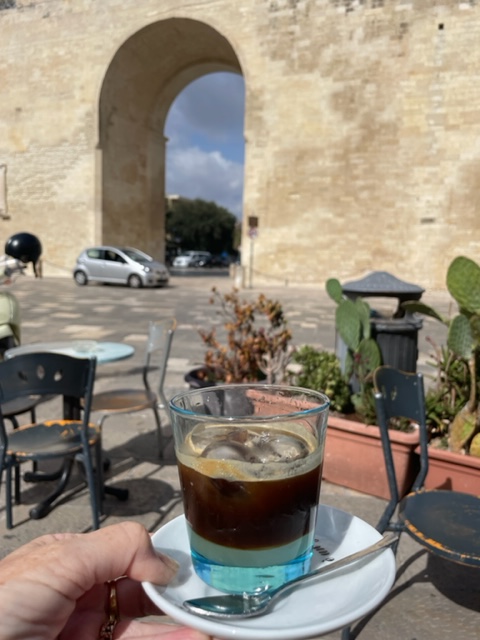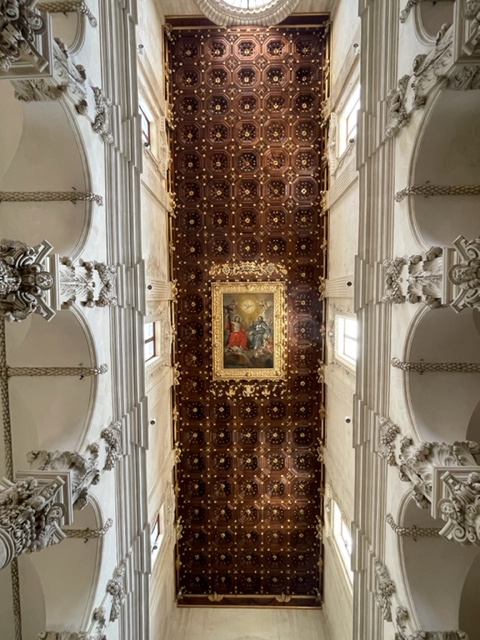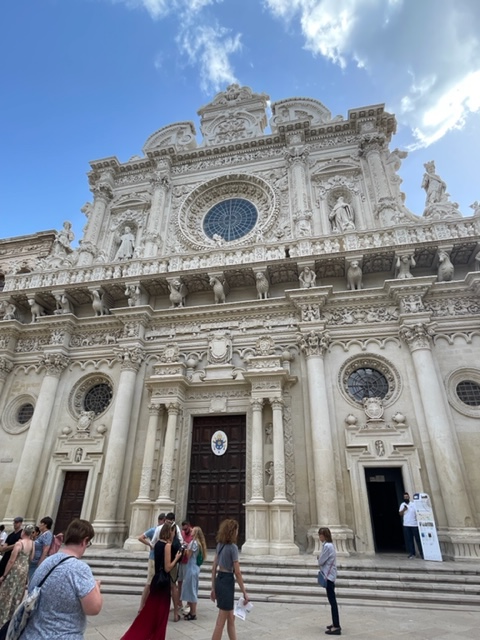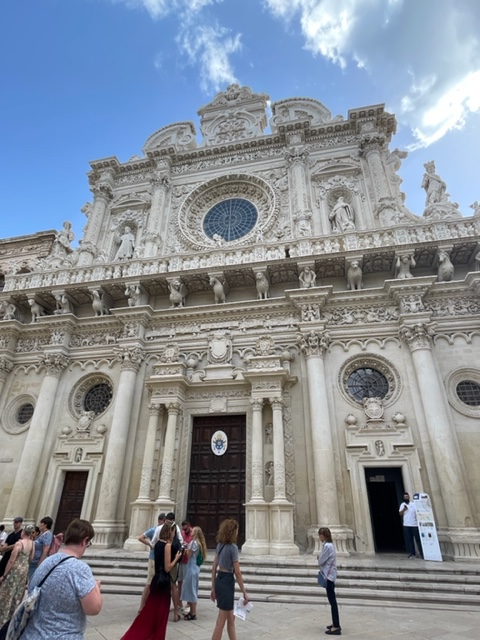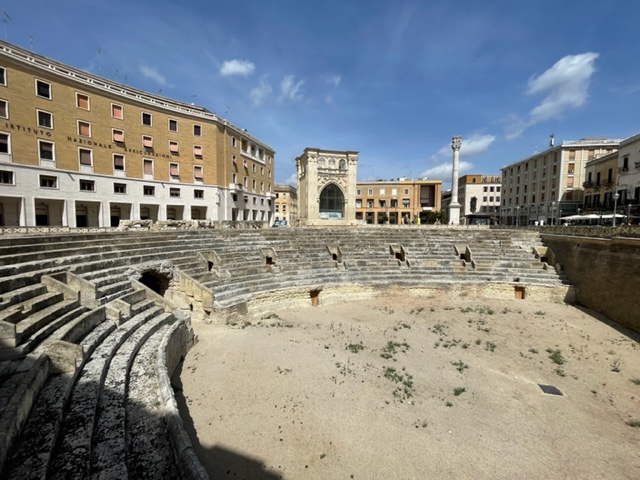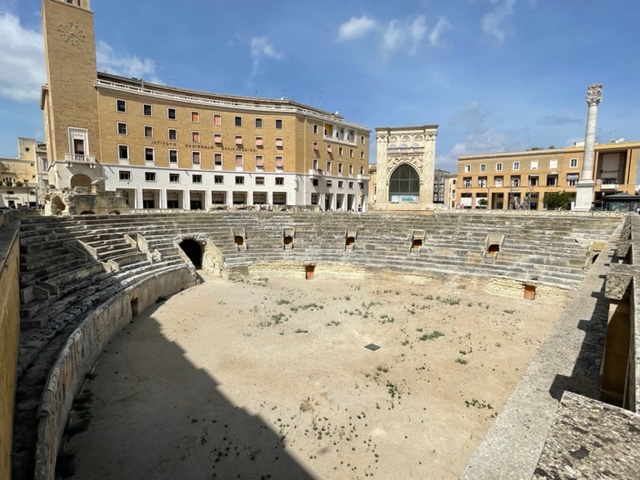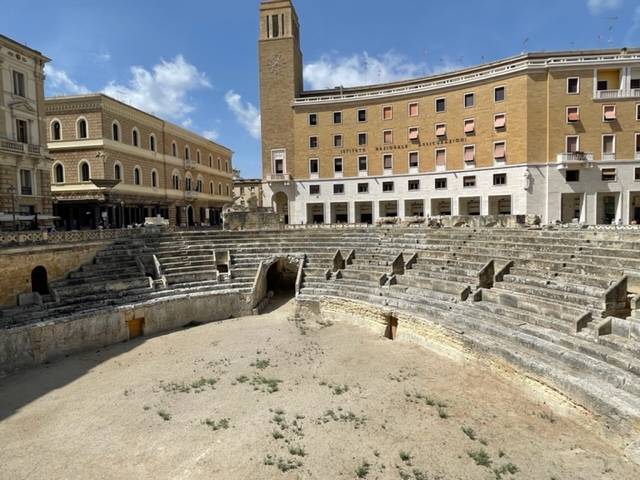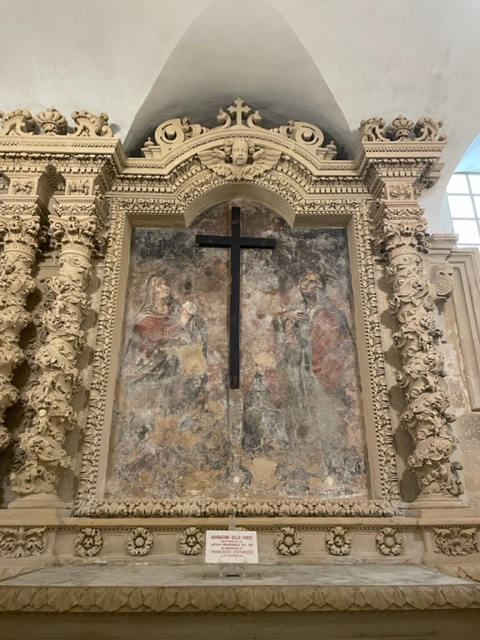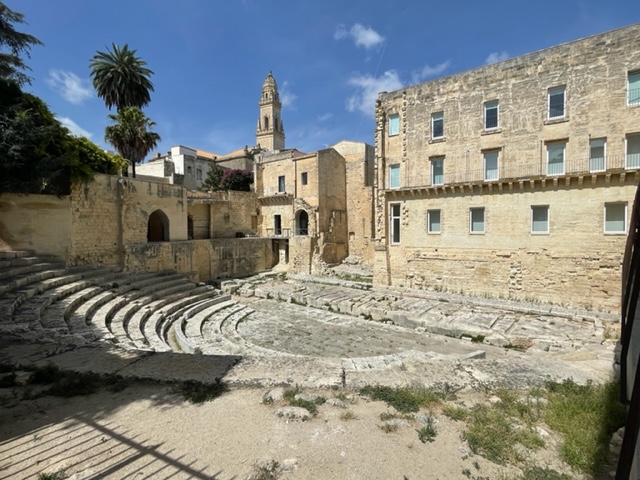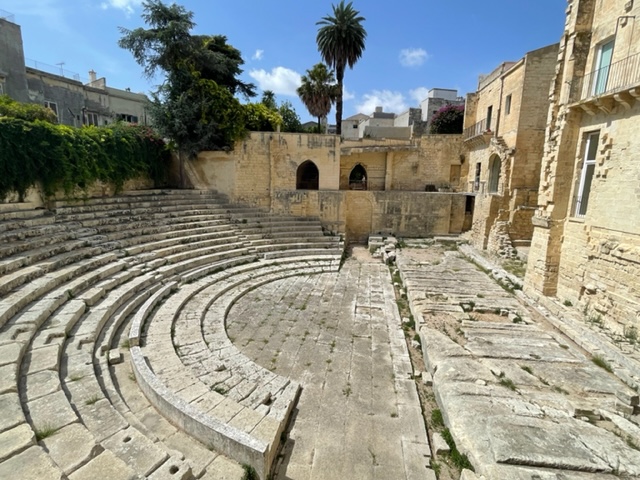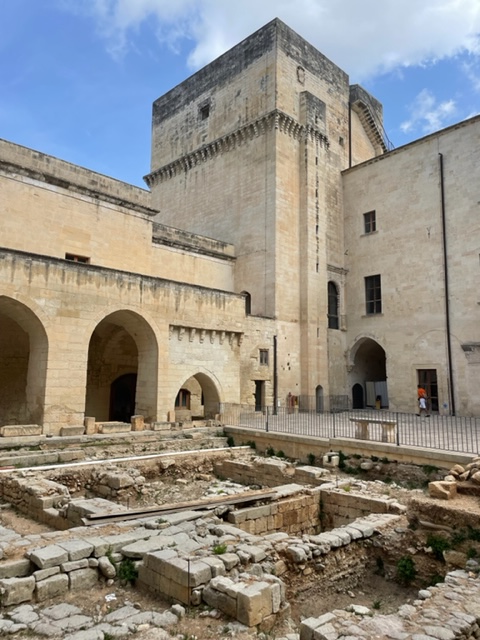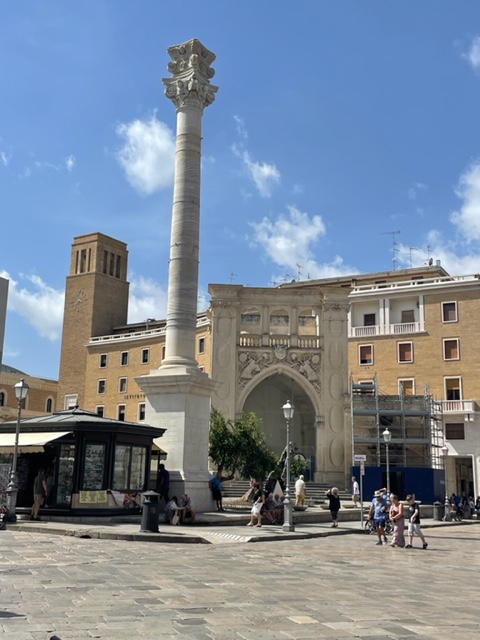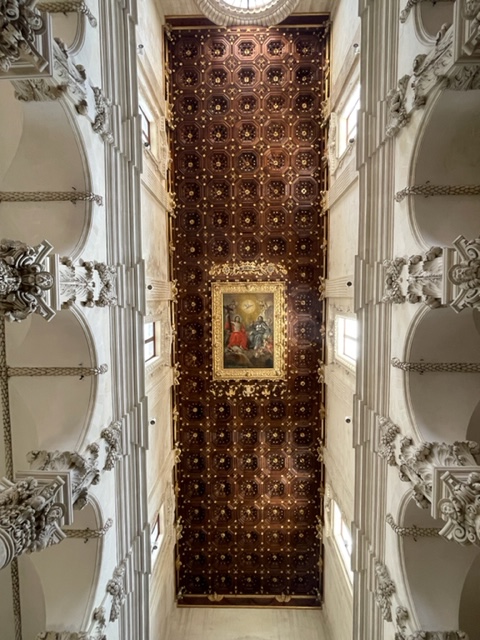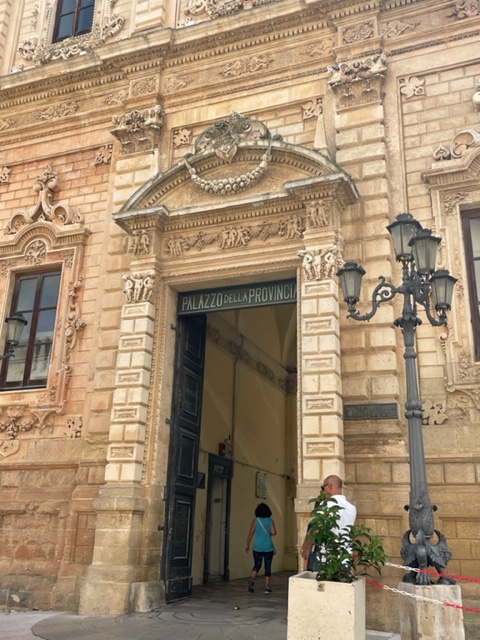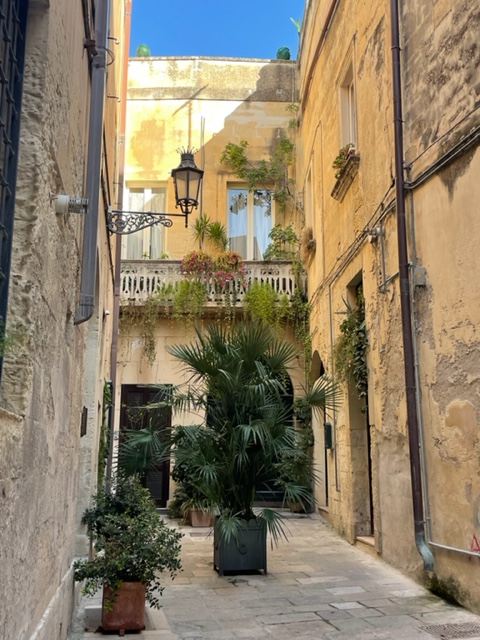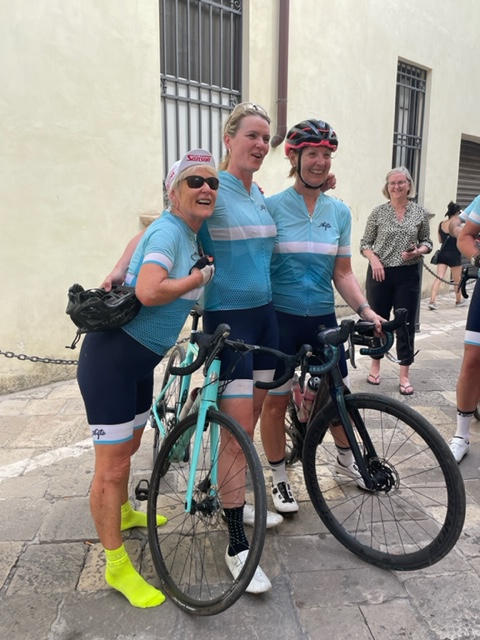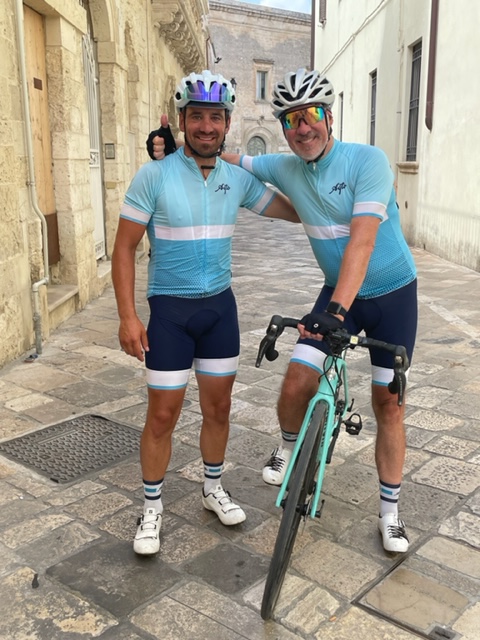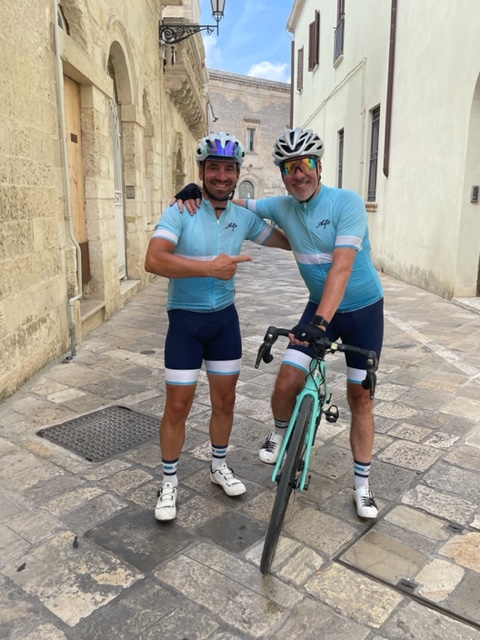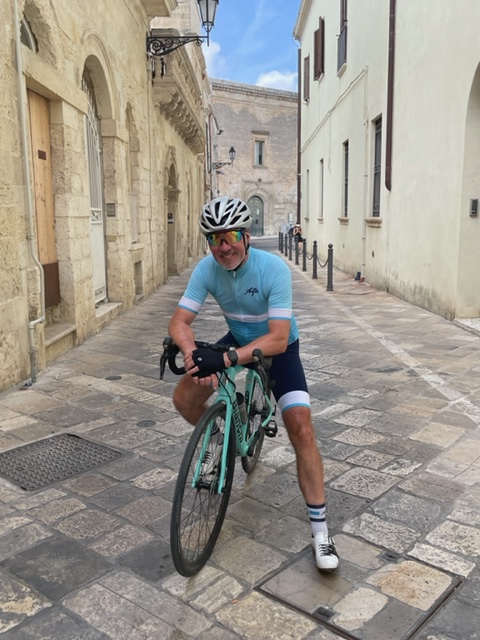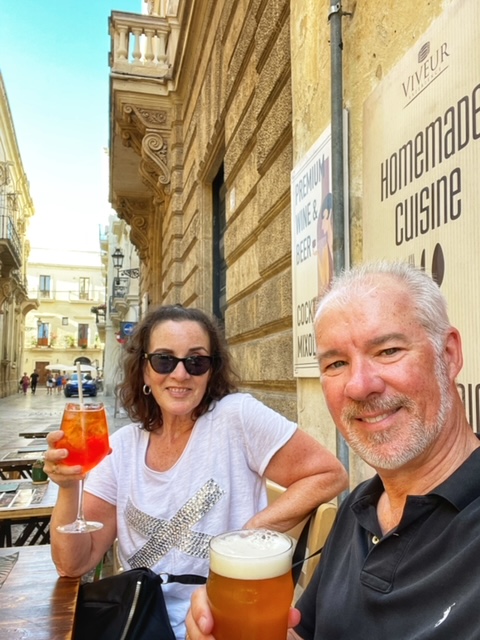Lecce: Fri Sept 9 – Sat Sept 10.
It was a cloudy start to our last day in Otranto and, even at 6 am, there was a warm wind blowing and my phone’s weather app showed a ‘feel like’ temperature of 32 degrees. I found out later that that the wind pattern is known as Scirocco and blows across from Africa. We were just grateful it wasn’t carrying the gritty red dust that it sometimes does.
Our group departed Otranto at around 9am for the move up to Lecce, the last stop on the cycling part of this tour. The non cycling group had a 45 minute drive up to Lecce followed by a coffee stop for our last cafe Leccese before taking a 2 hour walking tour at 11am.
Our walking tour started from our hotel which was located on the edge of Lecce old town and our guide, Max, took us through the old town to visit the key sites in Lecce. One of the first things he mentioned was about the use of local Lecce limestone in the construction of most of the buildings. This particular stone is much softer than traditional limestone making it easier to carve and many of the buildings were carved in beautiful baroque fashion helping Lecce to earn the title of ‘Florence if the South’. Some other key points raised were that the population is around 95,000, with 6,000 in the old old town, and this compares to Bari with a population of around 300,000, and that the major industry for Lecce is tourism and followed by olive oil and wine production.
Lecce old town is a walled city, with the walls that are visible today having been rebuilt in 1500, but the area has been populated since around 7th century BC. Our first visit was to the impressive Basilica di Santa Croce built over a period of 1550 – 1650 and as a monument to the ousting of the Ottomans and the carvings on the front of the Church depict Ottomans in subservient positions and holding up the higher Christian structure. One other feature of note for this church was inside and was the spectacular carved walnut ceiling.
Next door to the Basilica was the Jewish Museum founded on the site of an old Synagogue, which had been destroyed and converted to a church and, then, a house, before ending up as the museum. Jews were expelled from the city in 1541 and never returned in any significant number.
We then ambled on to the town square with its two main features. The first being a central column marking Lecce as part of Apian way: the ancient road connecting Rome in the north to Brindisi in the south. The second being the remains of, roughly, one quarter of a massive Amphitheatre. This was only discovered in the 1800s by accident when a nearby bank was undertaking some excavation work. Max advised us that the amphitheater would have been a site where the rather weird mix of Theatre and Gladiatorial events would have occurred.
We then moved on to do a walk-through of Lecce Castle. It is free entry to simply pass through from one side of the castle to the other. The currency structure is a medieval building built on the site of an older castle. An extra outer wall was added in 1549 making for one impressive Castle!
Our journey then took us past the 1600s Santa Chiara and the Roman Theatre before our last stop at the Duomo. The Duomo was completed In 1682 and this also featured a spectacular carved walnut ceiling. The crypt, dating back to the 1500s, stood out primarily for the inclusion of open tombs that had been the privilege of clerics and wealthy families. It was rather eerie being able to see skeletal remains in the cavity below the floor grates. Apparently, these underground tombs were initially completely filled with skeletal remains but were removed by the archeologists.
Our tour ended at 1pm and we stopped of for a bite to eat before heading back to the hotel to welcome the cyclists at the end of their last ride. I then retraced the steps of our tour guide to show Mark this beautiful of Lecce before meeting back with the group for our last aperitivo and dinner for the tour.
